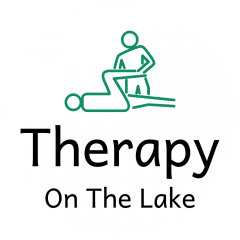As a physiotherapist, I have always emphasized the importance of regular exercise for maintaining optimal health and well-being. However, in today’s world, where air pollution is a growing concern, we need to address the impact of poor air quality on our exercise routines. With the rise of industrialization and urbanization, many of us find ourselves living in areas with compromised air quality. In this blog post, we will explore the potential risks of exercising in polluted environments and provide valuable tips on how to stay active while minimizing exposure to harmful pollutants.
Understanding the Risks: Air pollution is known to contain various harmful substances such as particulate matter, ozone, nitrogen dioxide, and volatile organic compounds. These pollutants can irritate the respiratory system, leading to shortness of breath, coughing, wheezing, and even more severe conditions such as asthma, bronchitis, and cardiovascular diseases. Engaging in physical activity in such polluted environments can exacerbate these health issues and pose a risk to your overall well-being.
Tips for Exercising in Poor Air Quality:
- Monitor Air Quality Index (AQI): Before planning any outdoor activity, check the Air Quality Index (AQI) in your area. Numerous websites and mobile applications provide real-time air quality data. Avoid exercising outdoors if the AQI is high or during times when pollution levels peak, such as rush hours or days with unfavorable weather conditions.
- Choose the Right Time and Location: Consider exercising early in the morning or late in the evening when pollution levels are usually lower. Additionally, select exercise routes away from high-traffic areas, industrial zones, or other known sources of pollution. Parks or green spaces with trees can also help filter the air to some extent.
- Modify Intensity and Duration: If you must exercise outdoors when air quality is compromised, adjust your workout routine to minimize the strain on your respiratory system. Reduce the intensity and duration of your exercise to avoid excessive inhalation of pollutants. Engage in low-impact activities like brisk walking, yoga, or tai chi instead of high-intensity workouts.
- Protect Your Airways: Invest in a properly fitting N95 or N99 mask designed to filter out fine particles. These masks create a barrier between your airways and harmful pollutants. Remember to consult with a healthcare professional to ensure you select the right mask and learn how to wear it correctly.
- Opt for Indoor Exercise: On days when the air quality is poor, consider shifting your exercise routine indoors. Join a gym, fitness center, or community center that offers indoor exercise facilities. You can engage in activities such as swimming, indoor cycling, strength training, or group exercise classes, all while breathing cleaner air.
- Improve Indoor Air Quality: Create a clean and healthy indoor exercise environment by improving the air quality in your home or workout space. Use air purifiers with HEPA filters to reduce indoor pollutants, keep windows closed during peak pollution times, and ensure proper ventilation.
Conclusion: While regular exercise is essential for our physical and mental well-being, it is crucial to prioritize our health when faced with poor air quality. By taking necessary precautions and following the tips mentioned above, we can still stay active while minimizing exposure to harmful pollutants. However, always listen to your body and consult with a healthcare professional if you experience persistent respiratory symptoms or any other health concerns. Let’s strive for a balance between staying active and safeguarding our respiratory health, even in the face of environmental challenges.

